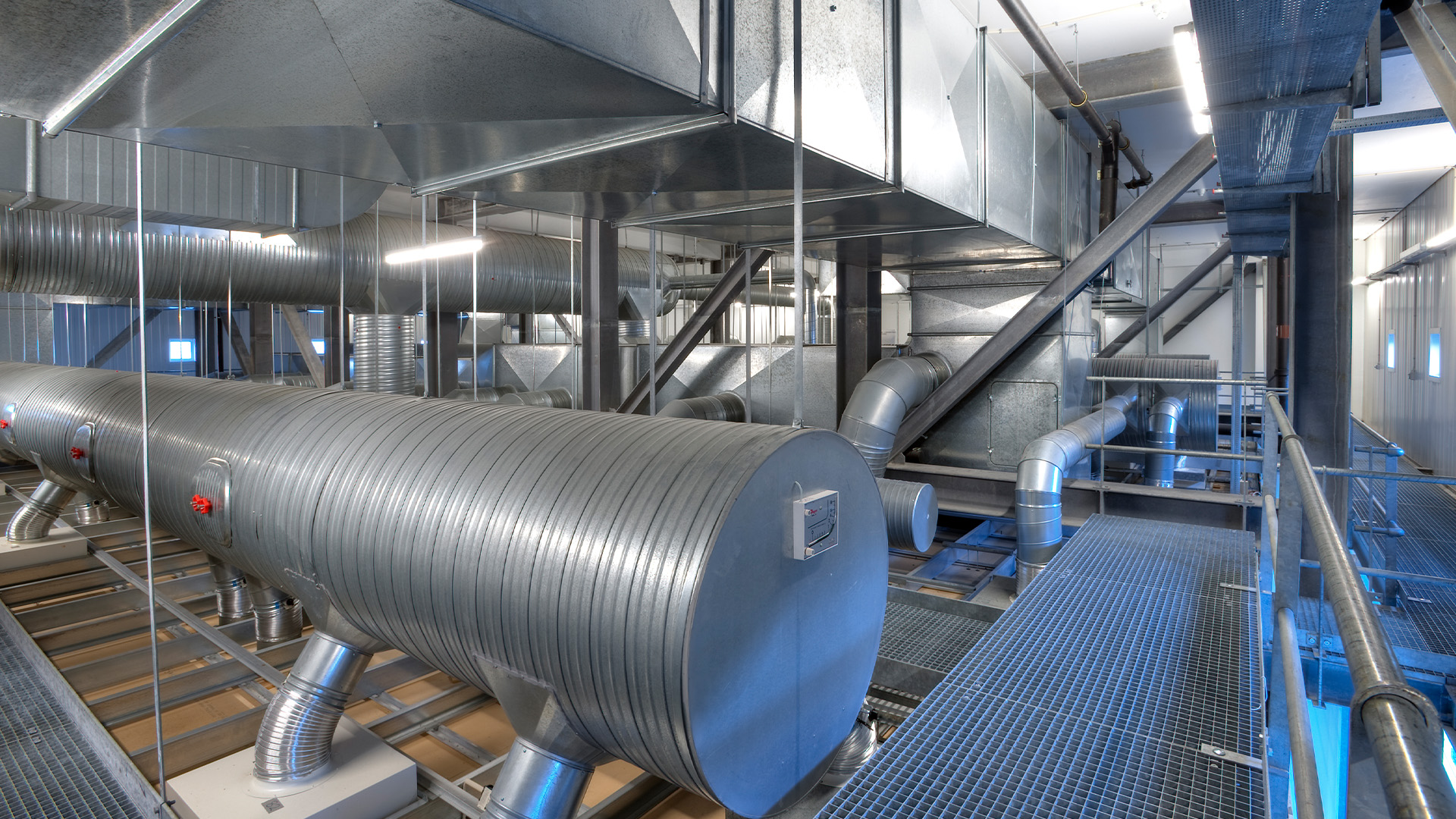Energy
This is how DTU Nanolab saves electricity
The cleanroom uses plenty of electricity to keep the air particle-free, but consumption can be cut by 10 percent by, among other things, adjusting the level of ventilation.


Less pressure loss
DTU Nanolab is located at Ørsteds Plads on DTU Lyngby Campus. A building of 1350 m2 spreading across three floors above ground as well as a basement. What you cannot see from the outside is the ingenious system of ventilation ducts, pipes, cables, and technical installations that make up the entire first and second floors and ensure a constant recirculation of the air in the cleanroom.
When DTU Nanolab lowers air recirculation, it affects the pressure in the ventilation system. The loss of pressure inside the pipes is reduced, and the ventilation system will work less hard to clean the air and therefore consume less power.
In addition to lowering the air circulation, DTU Nanolab also plan to replace the filters that the air passes through before being blown into the cleanroom. They exchange the filters with some that offer lower pressure loss.
"We’ve already done this in parts of the cleanroom, but we would like to extend it to the rest of the cleanroom, which is a bit older,” says Leif Steen Johansen.
Biggest energy saving measures
Together, the two energy efficiency initiatives, lowering the air circulation and replacement of filters, will provide the biggest energy consumption savings at DTU Nanolab, according to the two technicians.
“Overall, with the measures we’re taking, we hope to be able to save up to 10 per cent of our total energy consumption, which is around four gigawatt hours a year,” explains Jan Vasland Eriksen.
At current electricity prices—for example DKK 4 per kWh—this equals savings of DKK 1.6 million.
In connection with a minor refurbishment and programming, the ventilation units have now been connected to Campus Services CTS system, which is a building control system. This enables Campus Service to control the main ventilators and Fan Filter Units (FFU) centrally. This also means that DTU Nanolab does not have to reduce the flow manually in the evenings and on weekends.
DTU Nanolab's other energy saving measures
Replaces 640 fluorescent tubes
Access control
Vacuum pumps
Topic
Security of supply and efficiency
Europe is in an energy crisis. Gas and electricity shortages have put the spotlight on how we can reduce our energy consumption and develop new technologies that can help to provide us with safe, effective energy supplies in future.
Read more about this in DTU’s energy topic—security of supply and efficiency.
Contact
Leif Steen Johansen Head of Operations, Ph.D. DTU Nanolab - National Centre for Nano Fabrication and Characterization Phone: +45 45255713 Mobile: +45 25348992 lesjo@dtu.dk
Jan Vasland Eriksen Facility Manager DTU Nanolab - National Centre for Nano Fabrication and Characterization Mobile: +45 22157001 jver@dtu.dk